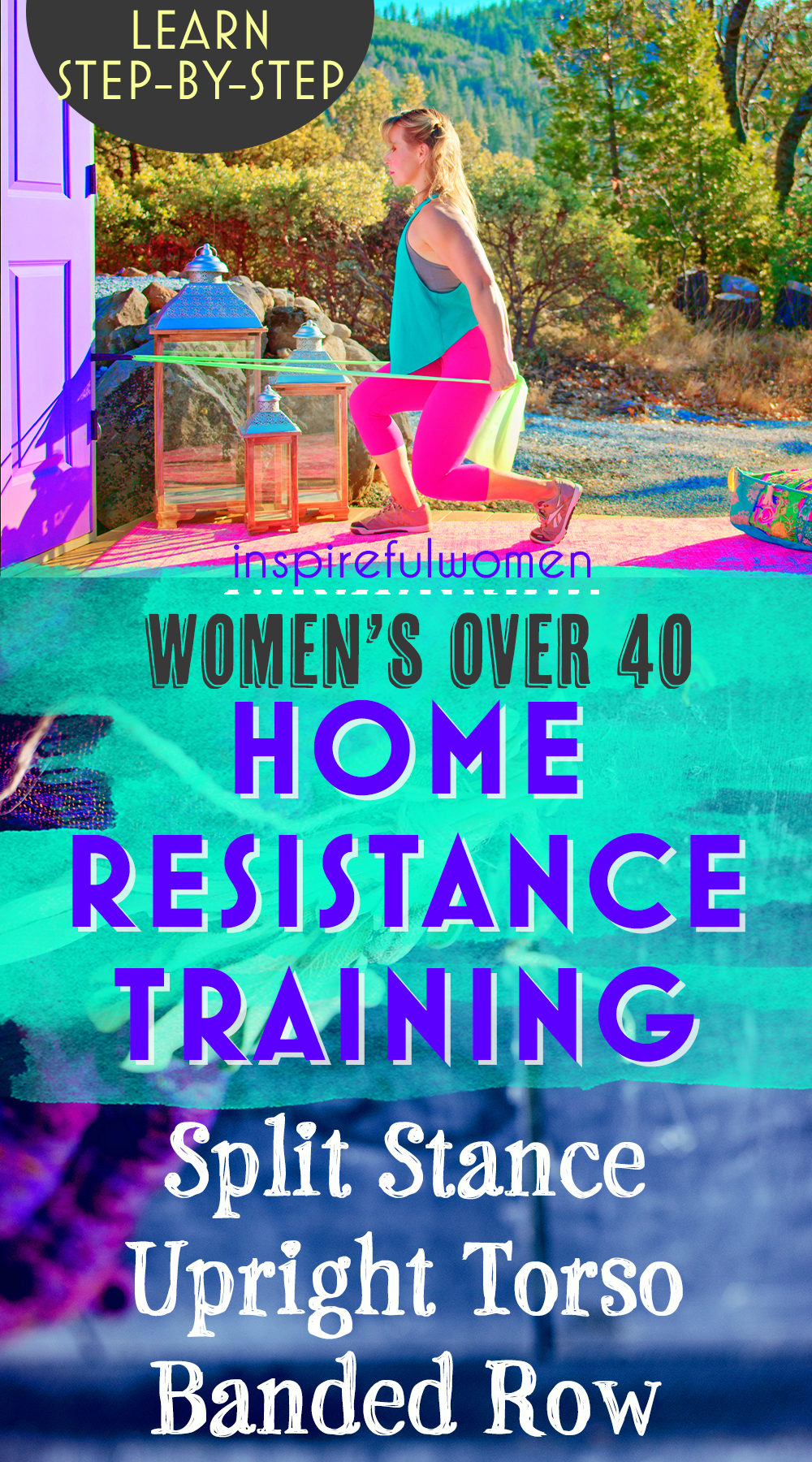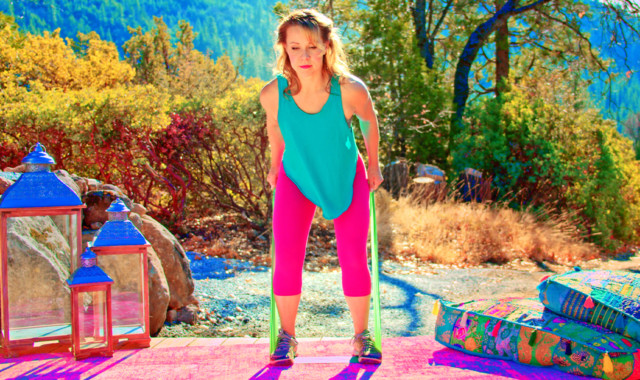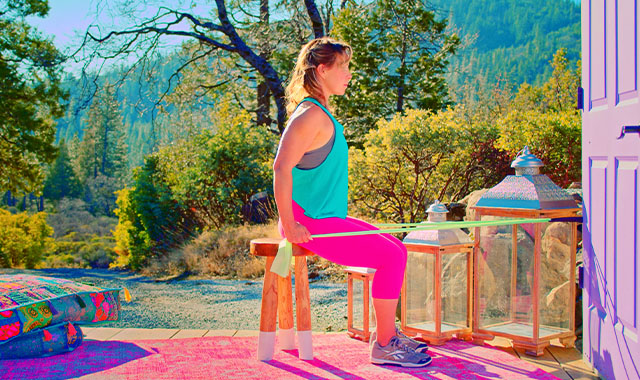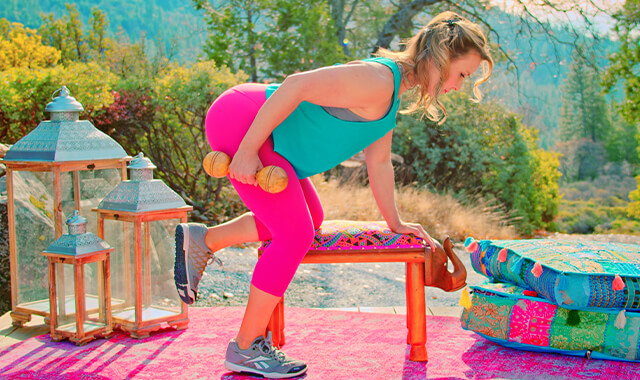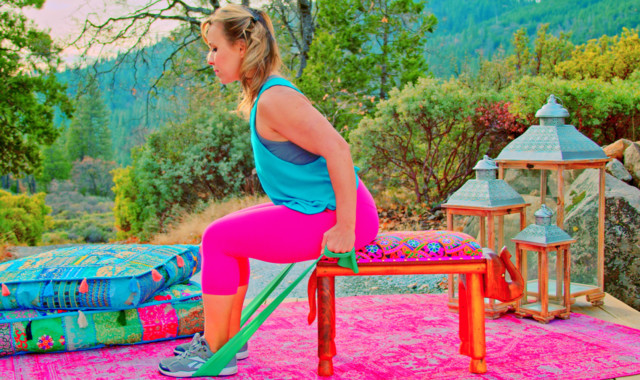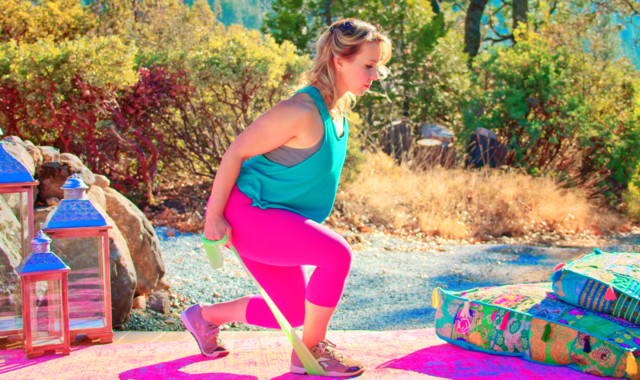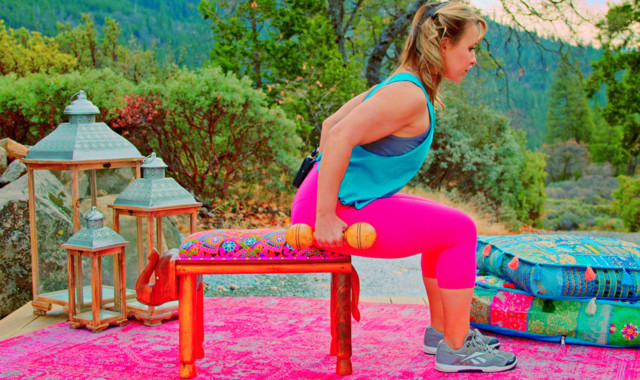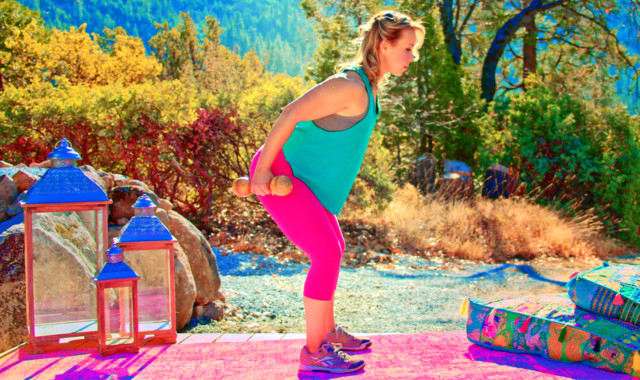Split Stance Straight Torso Anchored Band Lat Row
How to Do the Split Stance Upright Anchored Band Lat Row | In-Depth Guide [VISUAL LEARNERS] Advanced
Proper Form & Common Mistakes | Home Resistance Training
WHAT DO YOU WANT TO SEE?
QUICK DEMO
QUICK DEMO
MUSCLES THIS WORKS
MUSCLES
MAIN MUSCLES WORKED IN Split Stance Straight Torso Anchored Band Lat Rows
LATS
The "lats" as they are affectionately called...lol just kidding - anyway, "lats" is short for Latissimus Dorsi which is the widest muscle of the upper body and the largest muscle of the back .
OTHER MUSCLES WORKED:
- Middle and Lower Traps
- Rhomboids
- Serratus anterior
- Triceps
- Teres major
- Rear deltoid
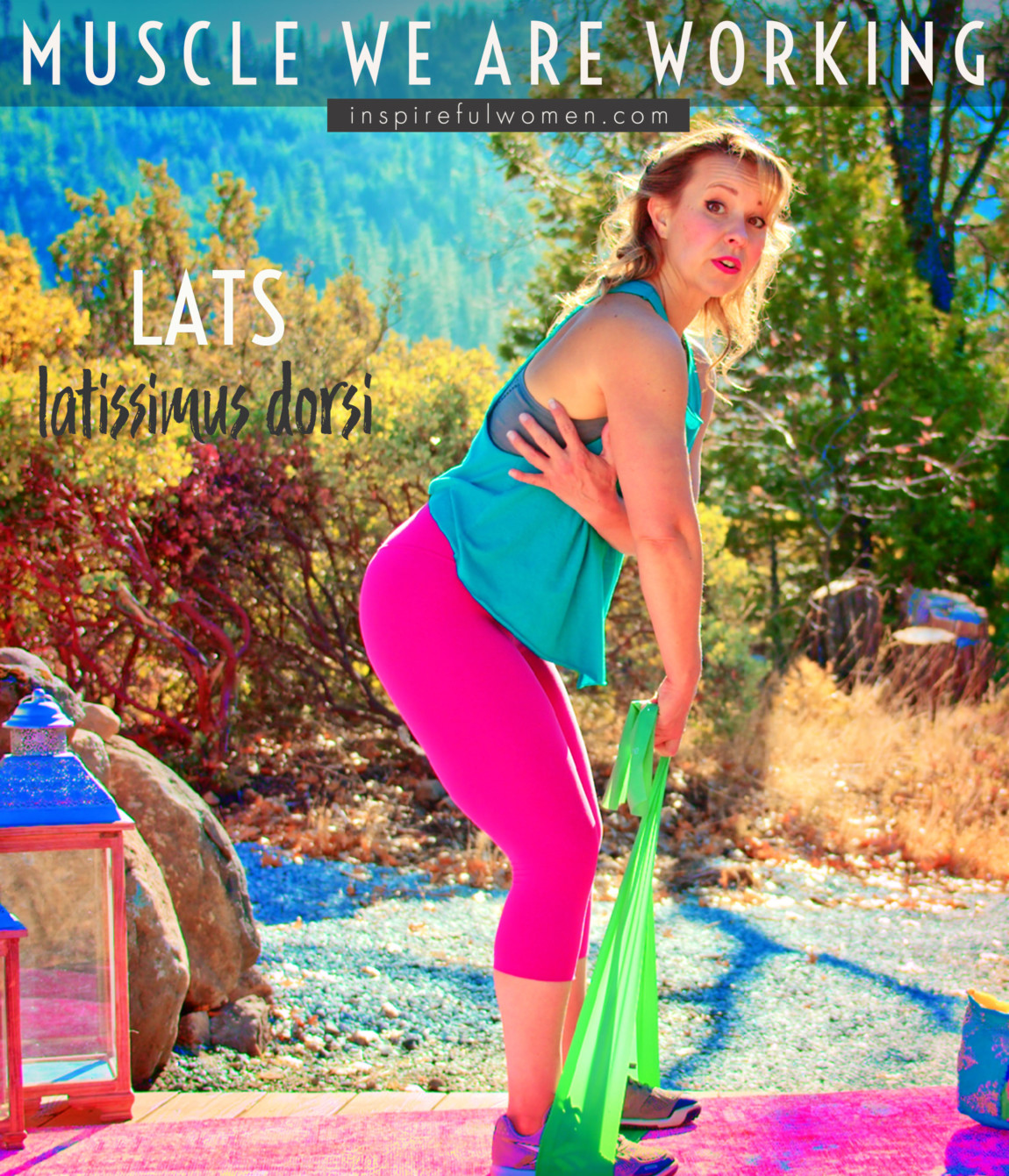
STARTING POINTERS
Starting Pointers
WHAT WE'RE DOING TODAY
ALL WE'RE DOING:
Pull the band towards our hips, in a lunge position.
This advanced back exercise is especially effective at strengthening the upper body and improving posture, making it a great choice for anyone looking to build a stronger, more balanced physique.
This is a good option for doing lat rows where our torso can remain upright - many lat rows call for holding our torso bent over which can be very challenging to do with proper form! This allows us to stay upright to make it a bit easier, while still being able to effectively work the lat muscles.
This variation of the lat dumbbell row is done in a lunge position. The split stance position challenges balance and stability and will work the muscles of the legs, especially the glutes, quads, and hamstrings. The use of bands makes it easy to increase or decrease the resistance as needed.
HOW TO DO THE EXERCISE
LOOKS
HOW lat rows SHAPE OUR BODY
Building the lat muscles contributes to what they call a “V-taper” - it adds to a more hourglass-ish, slim waist appearance.
Confident and healthy upright posture.
PROPER FORM
PROPER FORM: Split Stance Straight Torso Anchored Band Row
EQUIPMENT, SETS & REPS
EQUIPMENT
Main set (3: Light/Med/Heavy)
X-Heavy Band (I recommend getting this too if you plan to use resistance bands frequently).
SUGGESTED STARTING WEIGHT FOR WOMEN:
Moderate resistance level band.
SETS & REPS:
2 sets of 8 - must fatigue the muscles.
PACE:
Moderate up - with control and back stability, and lower down for the eccentric component.
BODY POSITION
BODY POSITION FOR THE Split Stance Straight Torso Anchored Band Row
BAND: Anchor the band at a height that allows pulling the arms back behind the body while maintaining tension on the band, approximately between your lower chest and hip level (when in the split squat position). Stand with the anchor in front of you. Hold one end of the band in each hand.
FEET: Staggered stance, a lunge position. The front leg: foot is flat on floor. The back leg: toe is planted with heel lifted.
BODY STANCE: Shift body weight towards the front leg, bend both knees lowering down to a squat position. The front knee is bent to approximately 70 degrees. Torso upright, spine in neutral - pelvis, hips, shoulders squared to the front.
HAND/GRIP: Neutral - palms facing in, should be a comfortable grip.
ARM: Both arms out slightly to the front, elbows soft (can have a slight bend) - holding the band pull down until the band is about 8 inches in front, and slightly outside of hip width. The band should be taut in the starting position.
NECK: Neutral and relaxed throughout the movement. Long neck - space between top of shoulder and earlobe.
HOW TO DO
HOW TO DO Split Stance upright Torso Band Rows
CUE: Maintain good alignment - the shoulders and hips squared to the front, knee not leaning in or out.
Pull your shoulder blades together and down the back.
Pull your upper arm back (towards the back wall), thinking of leading with the elbows.
Continue to move the upper arm back behind the body, inwards towards midline (the spine), and down towards your low back, aiming the elbows towards the back pockets.
Pause and squeeze the lat muscles. Return to the starting position with slow control and repeat.
HOW TO SAFELY GET OUT OF THE EXERCISE
Release the band. Push up with both legs to straighten the knees, bringing the back leg forward.

COMMON MISTAKES
COMMON MISTAKES
WHAT TO AVOID WITH THE Split Stance Straight Torso Anchored Band Row
KEY TIP:
Guess what? Good news! Many avoids are the same for most movements. Once you learn the basics, there's really only a few extra avoids for each individual movement.
1. Avoid rounding/Arching your back
AVOID: Avoid arching(extending) or rounding (flexing) your low back
WHY NOT?
- Can lead to muscle strain or low back joint injury, it will also decrease the activation of the targeted muscles. Maintain a neutral spine position.
- Pressure or discomfort in your low back.
WHAT TO DO:
- Maintain a neutral spine position to prevent low back joint injury, muscle strain, or damage over time.
- Troubleshooting suggested fixes:
- Poor core strength: activate your abdominal muscles, or do choose a position with more support.
- Poor back extensor strength: choose a position with more support.

2. Avoid using your neck
AVOID: Avoid using your neck muscles
WHY NOT?
- The neck should be neutral and relaxed, space between the earlobe and top of shoulder - this can lead to neck and/or shoulder injury over time and it prevents you from using the correct muscles. This can lead to neck strain, injury, or damage over time.
- You may feel neck discomfort, find that you are pressing down with your head, or gripping with your neck muscles.
WHAT TO DO:
- Gripping neck muscles in an attempt to stabilize the shoulders: relax the neck and activate the core muscles more, activate the scapular stabilizers in retraction and depression.
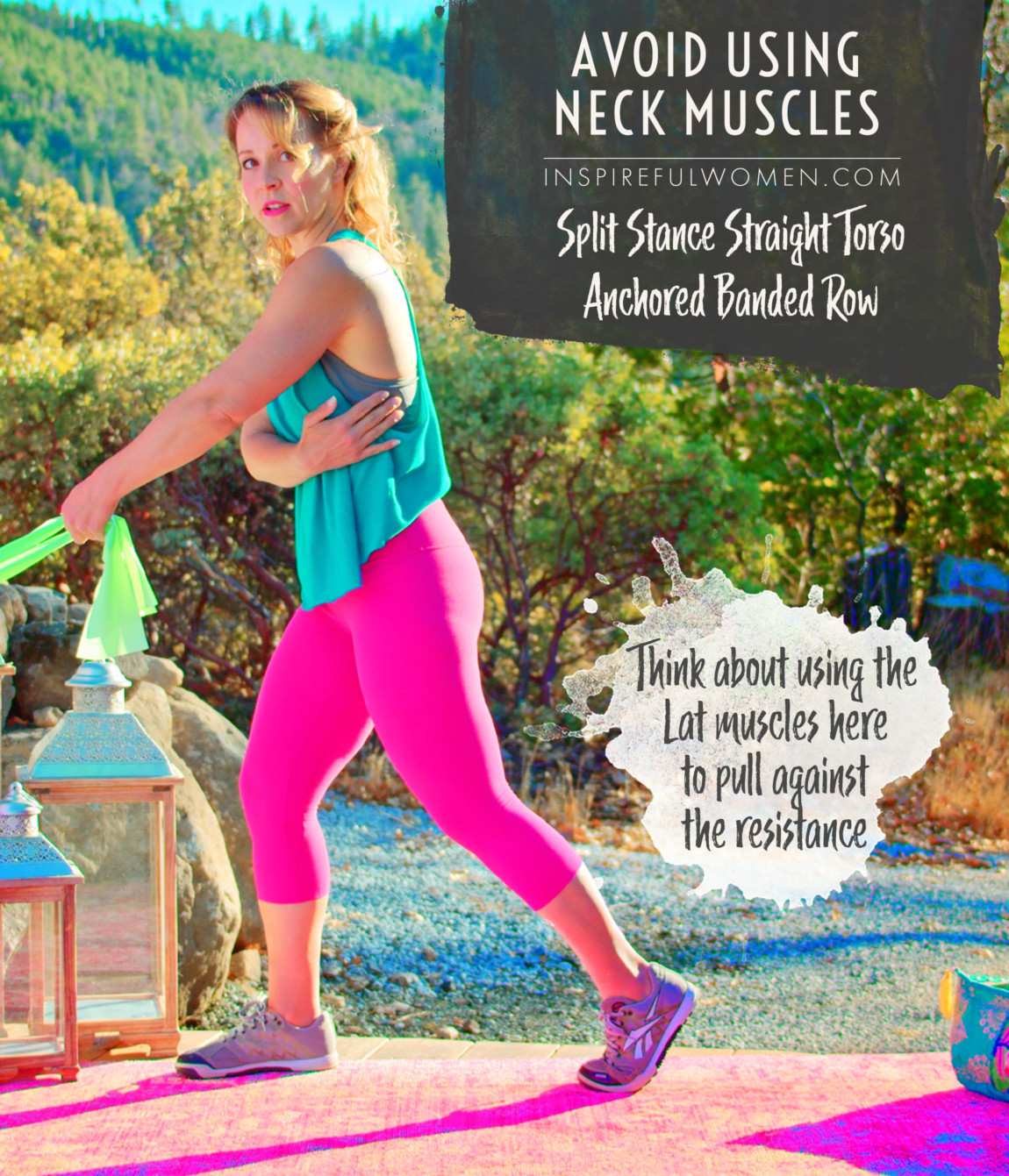
3. Avoid rounding your upper back or shoulders
AVOID: Avoid rounding your upper back or shoulders
WHY NOT?
- This can lead to neck, shoulder injury or damage over time and can result in using the wrong muscles (upper trap).
WHAT TO DO:
- Please watch the video clip to see the difference between shoulder blade protraction at the starting position vs. letting the upper back drop too far.
- Check posture and form in mirror

4. Avoid elbows flaring out
AVOID: Avoid letting the elbows flare outwards from your body as you move them upwards.
WHY NOT?
- This will cause the back of your shoulder muscle (rear deltoid) to do more of the work and the latissimus dorsi to do less of the work.
WHAT TO DO:
- Pull elbow in close to body.
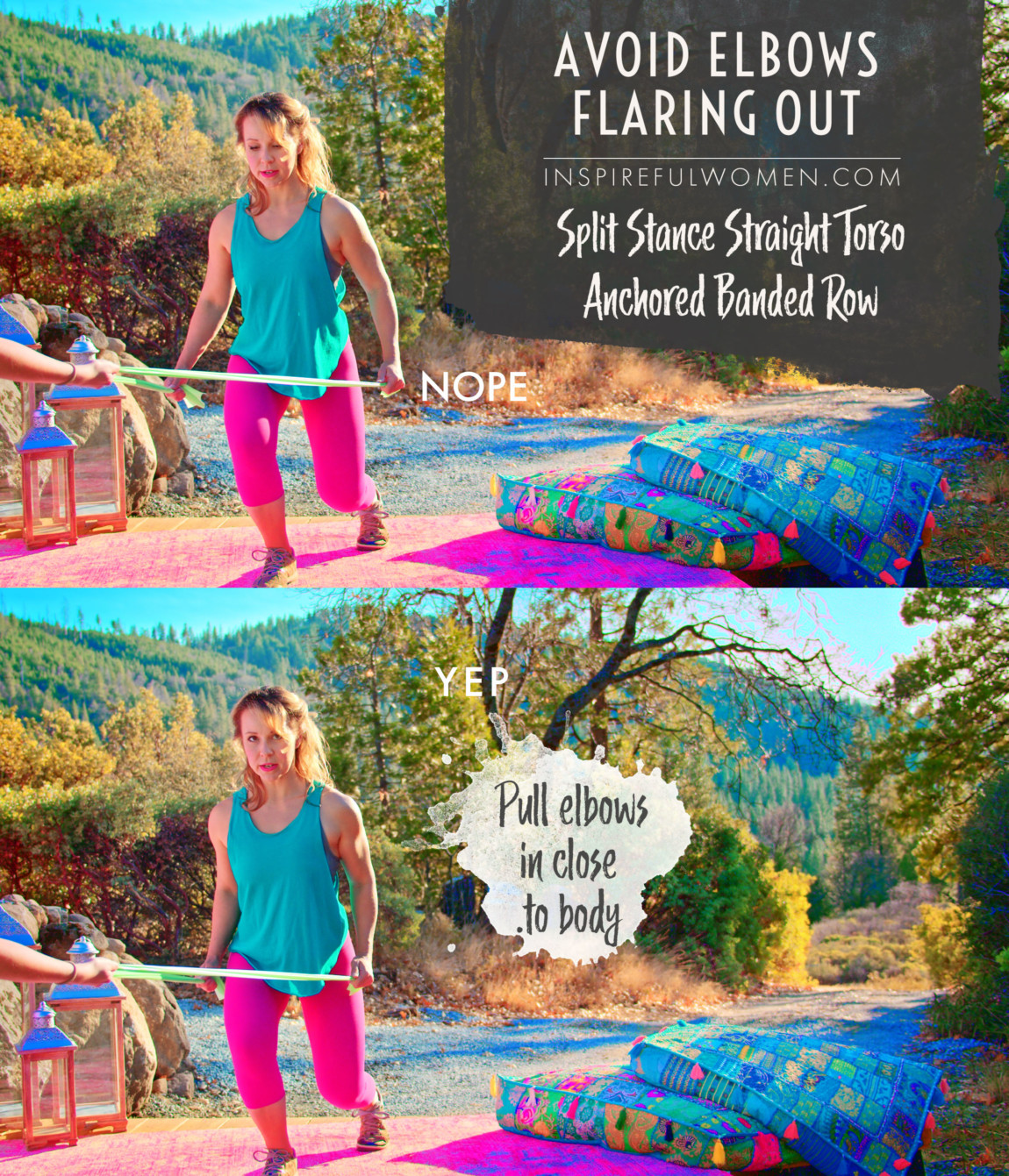
5. Avoid hips rotating back
AVOID: Avoid rounding your upper back or shoulders
WHY NOT?
- This can lead to neck, shoulder injury or damage over time and can result in using the wrong muscles (upper trap).
WHAT TO DO:
- Check posture and form in mirror
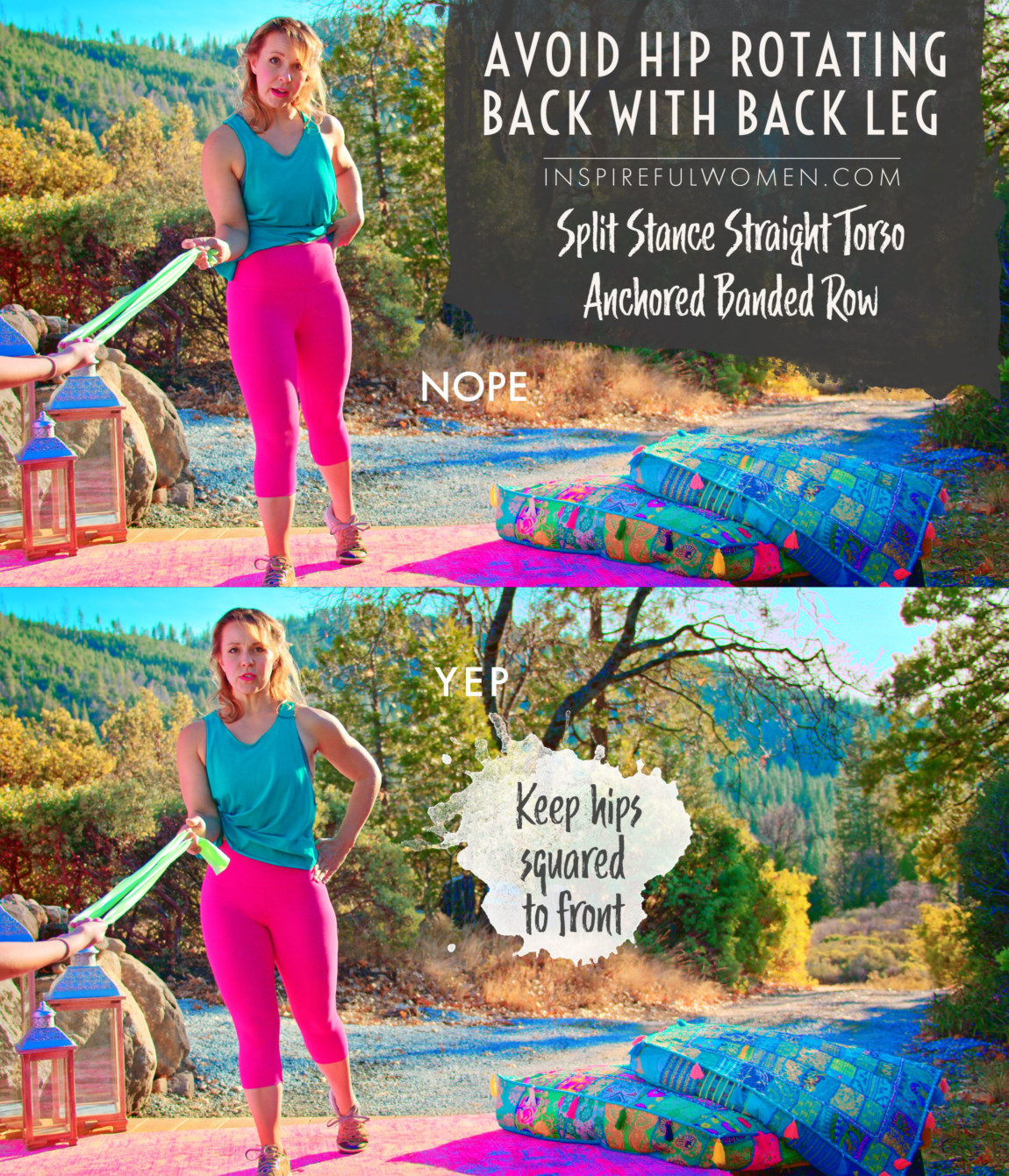
WHAT WE'RE DOING TODAY
WHAT & WHY
BENEFITS OF TRAINING THE lats
WHAT
WORKIN' OUR BACKSIDE
Sometimes we think of our backside as just the bottom half of us don't we! But today, we're working our OTHER backside- the top half.
The bent over row will work the latissimus dorsi muscle - which translates to “widest back”, it is most commonly called the lat muscle. The lat is shaped a little bit like a wing, and it can pull the arms in close to the body. In the movement we are doing today, you will be pulling the upper arm back and in close to the body.
Please note: If you saw the words "widest back" and panicked, let me clarify- you will not get a wide back from these exercises. What you WILL get is more definition in your back along with a healthier walking stride and better posture.
WHY BOTHER DOING IT?
WHY
WHY DO WE EVEN CARE?
BIG MUSCLES ARE TYPICALLY IMPORTANT
Bigger isn't always better, but on our bodies, when something is large, it usually means it's either really important, has a lot of different actions it's involved in, is connected to lots of bones and muscles, or all three.
So being that the latissimus dorsi muscle is the largest musce of the entire upper body, it's very important, not only for healthy movement of the shoulder, but also to hold us in an upright position.
CONNECTS WITH A BUNCH OF BONES & MUSCLES
The lat attaches to the spine, the shoulder blade, the pelvis and the arm - it even has a connection to your gluteus maximus - or buttock muscle. That's 5 places!!
Just knowing this tells us something about how important it is to work this muscle.
TEACHES US HOW TO USE THE LAT TO KEEP OUR TORSO DURING ARM MOVEMENTS
Learning how to use the lat to keep the torso still and move the shoulder blade back while you pull your arm back can help prevent future upper back, neck and shoulder pain.
UNLESS YOU'RE A WORKOUT PRO YOU PROBABLY HAVEN'T EXERCISED THIS MUSCLE MUCH
The history that many of us ladies have with exercise, including myself (I only started doing these lat movements about a year ago), is such that we likely haven't done exercises that specifically work this muscle. We've probably done lots of squats. We've probably done some on our knees pushups even though we absolutely hated it. We've probably done some lightweight bicep curls even. But not much back stuff. Not lat stuff.
So, now that we know it's a big important muscle, we can finally give it the attention it deserves and catch it up to speed with the other body parts we HAVE been working on an off for the last twenty years.
EVERYDAY LIFE
EVERYDAY LIFE &
MUSCLE FUNCTION
HOW WE USE OUR LATISSIMUS DORSI IN EVERYDAY LIFE
1. PULLING THE ARM DOWN (EXTENSION FROM FLEXION)
- Swimming - it’s called the swimming muscle because it does all 3 motions of the crawl stroke
- Rowing
- Cross country skiing
- Chopping wood
- Golf swing
- Pulling heavy items towards you
- Pulling a door closed
- Pulling weeds
- Hugging someone really hard
2. PUSHING YOUR BODY UP WHILE KEEPING THE ARMS STABLE
- Using crutches
- Pushing down to get out of a chair
- Pushing yourself out of a pool (hands on edge of pool)
3. MOVES AND STABILIZES THE SHOULDER BLADE
- Pulls the shoulder blade down (scapular depression)
- Holds the shoulder blade down to provide a stable base for your arm to work off of
4. HOLDS THE TORSO IN A HEALTHY UPRIGHT POSTURE
5. STABILIZES THE LOW BACK
- When lifting, carrying, heavy arm and leg use
HOW TO FEEL WHAT MUSCLE IS WORKING
How to Feel What Muscle is Working
Option 1: While standing, take one hand across, and touch near the bra line, just under the armpit. Actively press your shoulders down and elongate the torso/spine up, feel that muscle moving/contracting. That is part of your lat muscle.
If you don’t feel anything you can try it this way:
Option 2: While seated, take one arm across - but just below their breasts, and feel the lat just under the armpit. Take your arm on the side you are activating and push the hand down into the seat of the chair. Like a seated press-up. If your shoulder blade is elevated or in slight protraction you will not be able to get a good lat contraction, so be sure to pull your shoulder blade back and down, THEN push down and in with your upper arm. You will feel a strong lat activation just below your armpit along the side of your body.
SCIENCY STUFF
SCIENCY STUFF
SPIFFILICIOUS FACTS ABOUT MUSCLES & MOVES
The latissimus dorsi is sometimes listed as an accessory breathing muscle. This means that in times of stress, or heavy breathing, it can help to expand the rib cage during breathing in (inspiration).
The broad latissimus dorsi has attachments to the lower 6 thoracic vertebrae, all of the lumbar vertebrae, and the sacrum (triagular bone at the base of the spine) through the thoracolumbar fascia. It also has attachments to the lower 3 or four ribs, the inferior angle of the scapular and the humerus.
Weak lats can cause upper, mid and lower back pain, shoulder pain, even pain down your arm. Tight lats can limit movement of your shoulder blade and your arm, and cause low back and shoulder pain.
ALLLL MUSCLES & WHEN
ALL MUSCLES WORKING & WHEN DURING THE Split Stance Straight Torso Anchored Band Row
The core muscles, quads, glutes, and hamstrings will work to hold the starting position and keep the body still. The middle and lower traps, rhomboids, serratus anterior work to stabilize the shoulder blades in towards the spine (retraction) and down the back (depression) so that the arm muscles have a stable base to work off of. The triceps, teres major and lat muscles work concentrically to pull the upper arm back into extension. Towards the end of the motion the long head of the triceps and the lat work to extend (move behind the body) and adduct (move the upper arm inwards towards the spine). The rear deltoid may assist at this point.
As the band is released back to the starting position the lat, triceps, teres major, and muscles of the shoulder blade, work eccentrically to control the movement against the pull of gravity.
PIN IT FOR LATER!

